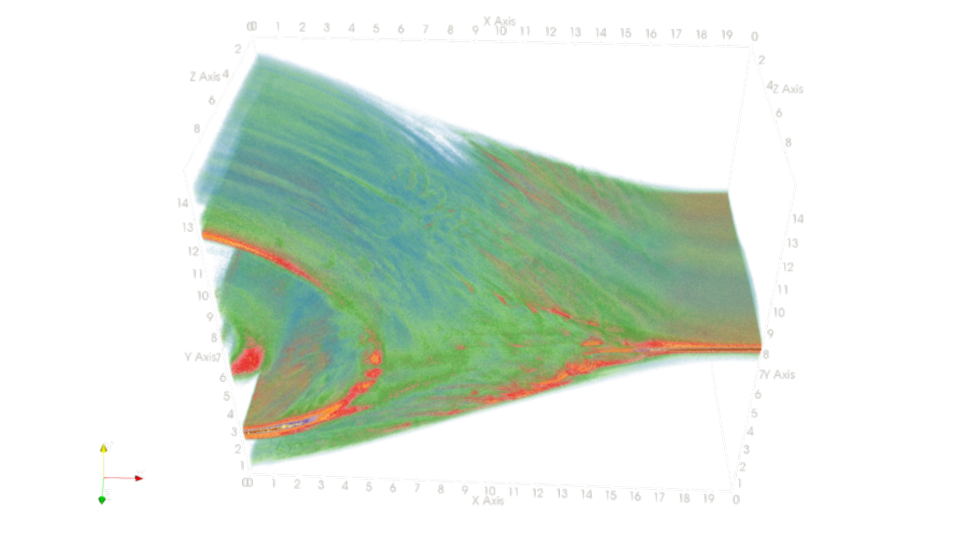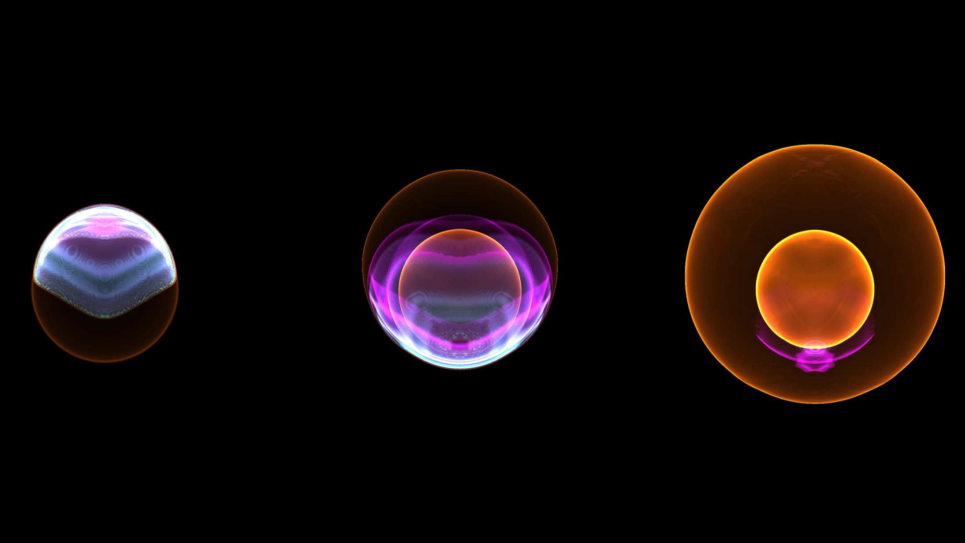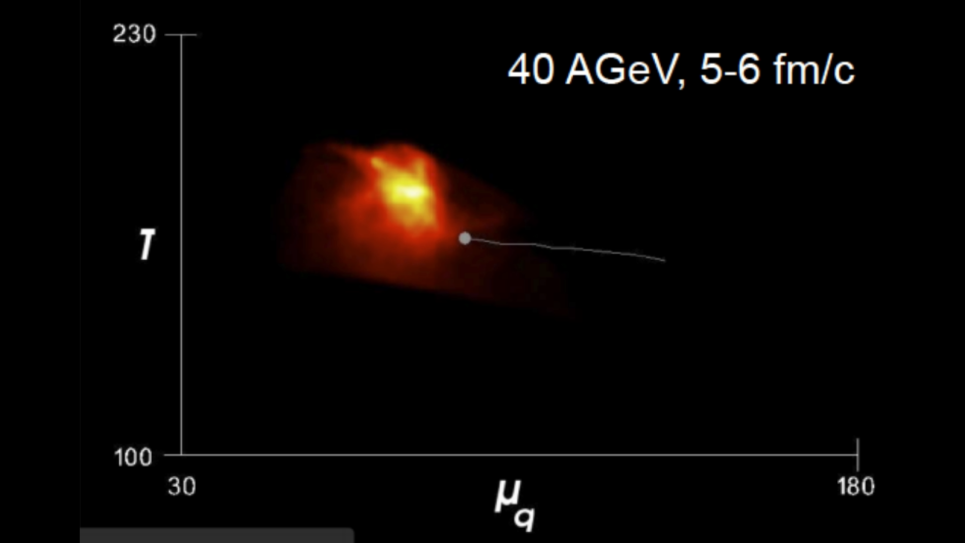
Simulation of a reconnection generated turbulent jet emitted from a site located on the extreme right at x=20 (note that only half of the simulation is shown, the domain extends to x=40 providing a right going jet as well). False color representation of the electron current in the x direction.

